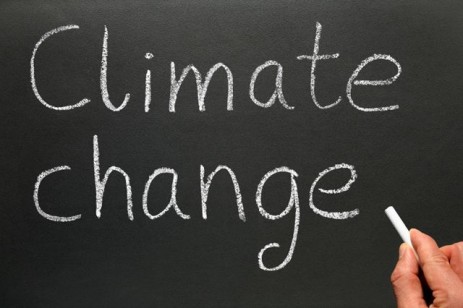 Welcome! It’s not too late to get up to speed on the climate-change jamboree that begins Dec. 7. Here’s a short primer.
Welcome! It’s not too late to get up to speed on the climate-change jamboree that begins Dec. 7. Here’s a short primer.
What is this Copenhagen thing?
It’s a gathering of negotiators from every United Nations member country who will try to come up with a plan to protect the world from catastrophic climate change. Two weeks to save the world!
Copenhagen, huh? Are they going to tell everyone that dikes and wooden shoes are the answer?
Sorry, that’s the Dutch. The Danish in Copenhagen will tell us that pickled herring and little mermaids are the solution.
Why should I care?
So glad you asked! Do you enjoy colorful fall leaves? Do you enjoy skiing? If you’re not sure about caring, better check out our 25 reasons to give a damn about climate change.
Do you think “Hagen Days” would be a good slogan for the event?
“Cop a Feel” is better. It plays off Copenhagen and also the dork term COP15–the 15th Conference of the Parties to address climate change. Dorky facts: The COP process started at the Rio de Janeiro Earth Summit in 1992. Kyoto was COP3. And yes, there’s a COP16 already scheduled for next year, in Mexico City.
This is the 15th one? Shouldn’t they have reached an agreement by now?
Most definitely. Scientists say our atmosphere can safely hold no more than 350 parts per million (ppm) of heat-trapping gases. We’ve already gone past that, to 387 ppm. To put it another way, to prevent the sort of changes that will make Chicago feel like Miami, we pretty much need to start cutting emissions last week.
But they’ll finish the deal in Copenhagen, right?
Fat chance. Everyone agrees it’s just about impossible to complete an agreement in Copenhagen, which was the hope earlier this year (how naïve we were …). That said, Copenhagen could still achieve some useful steps that make a finished deal possible in 2010. In fact, negotiators held week-long meetings four different times in 2009 alone to begin hashing out a deal (take a look at the draft negotiating text). So beware of anyone calling the conference a failure before it even begins.
Why is this so hard?
Getting 192 countries to agree on one plan is never easy. Climate change has been called “the public policy problem from hell” because it entangles so many competing interests and thorny issues.
I’m ready to learn now. What are those issues?
-
Historical polluters–Developed (industrialized) countries created most of global-warming polluting over the past century, so by how much will they cut their emissions? The United States is the only developed country that hasn’t announced a target, complicating everything else.
-
Leapfrogging—How will developing nations avoid the mistakes the industrialized world made over the last century? Ideally, by “leapfrogging” over outdated technologies like coal-fired power and moving straight to cleaner sources. That will cost money—how much and from whom must be hashed out.
-
Dude, it’s already happening–Climate change has already worsened droughts, malaria, and freak storms. The most severe effects will fall on the Global South, and it will cost up to $100 billion a year to help these countries adapt. How will wealthier countries share that cost?
-
Transitioning countries (China and India)—Their pollution contribution (got a ring to it, yeah?) has been light until the last few decades. Now it’s skyrocketing, as they build new power plants (mostly coal) to meet the growing demand of their increasingly middle-class economies. China and India say helping their citizens rise out of poverty is priority No. 1, but a global deal can’t work unless they agree to develop in a sustainable way.
-
The deadline—Meeting strong targets by 2050 is generally understood to be a crucial goal. But climate scientists say we must that we make progress much sooner. Will there be “mid-term” targets for 2020 as well?
-
Protecting forests—Trees are natural CO2 vacuums, and it makes perfect sense to preserve the forests we have—especially the carbon-rich tropical ones concentrated in Brazil and Indonesia. Lots of folks are optimistic about the REDD program (Reducing Emissions from Deforestation and Forest Degradation in Developing Countries) that would pay such countries to protect their forests. But were the protected trees going to be razed anyway? And who checks that they remain protected? Details, details.
-
Capping and Trading (don’t go away—this is the last one!)–It works like this: The international community agrees that only X amount of CO2 can be emitted into the atmosphere each year. Each country is then allotted an amount its industries can emit, and that amount declines by a small bit each year. Countries and companies can choose to emit their allotments, or sell portions of them to other countries or companies. Sounds crazy, right? But this kind of scheme was used to get the acid-rain problem under control in the United States more than a decade ago.
For more explainers on the Copenhagen talks, we’ve got a slideshow of 15 key players to watch, a timeline of how we got to this point, and 25 reasons to give a damn about climate change.
For ongoing news, analysis, and hilarious commentary from Eugene Mirman, bookmark our Copenhagen hub page.




